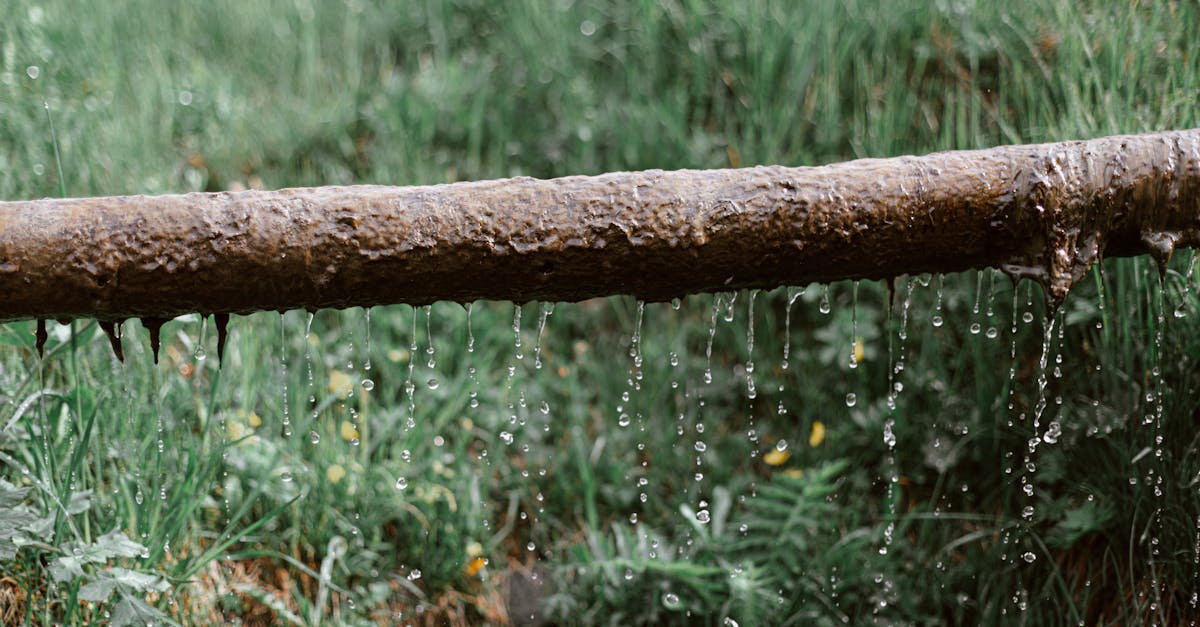
Table Of Contents
Regulations and Policies on Runoff Control
Regulations and policies play a crucial role in ensuring the effective control of runoff in various environments. In Drainage Solutions in Woodstock, adherence to environmental laws is imperative to prevent harmful runoff from polluting local water sources. By implementing stringent regulations, authorities can maintain the integrity of watersheds and promote sustainable practices among industries and communities.
Moreover, maintaining compliance with these regulations is essential to minimize the adverse impact of runoff on ecosystems. In Woodstock, continuous monitoring and enforcement of runoff control measures are necessary to safeguard water quality and protect aquatic habitats. Through consistent oversight and awareness campaigns, stakeholders can work collaboratively to mitigate runoff pollution and foster a healthier environment for current and future generations.
Compliance with Environmental Laws
Compliance with environmental laws is paramount in ensuring the effective management of runoff issues. By adhering to regulations and policies set forth by governing bodies, entities can significantly contribute to the preservation and protection of natural resources. Drainage Solutions in Woodstock, a pioneer in sustainable water management practices, sets a commendable example by strictly following all environmental laws related to runoff control measures. Such commitment not only enhances environmental quality but also fosters a culture of responsibility towards the broader ecosystem.
Moreover, compliance with environmental laws serves as a solid foundation for building trust with stakeholders and the public. Demonstrating a strong commitment to environmental protection through legal compliance can improve credibility and reputation. This approach not only safeguards resources but also paves the way for sustainable growth and development. As seen in the practices of Drainage Solutions in Woodstock, aligning business operations with environmental legislation not only benefits the company itself but also contributes positively to the community and the environment at large.
Innovations in Runoff Management
Innovations in runoff management are continuously evolving to address the challenges of urban development and environmental protection. Drainage Solutions in Woodstock have highlighted the importance of sustainable practices in managing stormwater runoff. Advanced technologies such as permeable pavements and green roofs have been instrumental in reducing the volume of runoff and improving water quality. These innovations not only help mitigate flooding risks but also protect water bodies from harmful contaminants.
Furthermore, the integration of smart sensors and real-time monitoring systems in drainage infrastructure has enhanced the efficiency of runoff management practices. By collecting and analyzing data on precipitation patterns and runoff flow rates, municipalities can optimize their stormwater management strategies. Adopting such advanced technologies not only improves the resilience of urban areas to climate change impacts but also promotes sustainable development practices for long-term environmental benefits.
Adopting Advanced Technologies
Adopting advanced technologies is crucial in improving runoff management practices. In the modern era, traditional methods may not suffice to combat the challenges posed by increasing urbanization and climate change impacts. One innovative approach that has gained recognition is the utilization of smart technologies to enhance drainage systems. Incorporating sensor-based monitoring and real-time data analysis can provide valuable insights into the performance of drainage solutions in Woodstock, allowing for proactive adjustments to mitigate runoff issues effectively.
Furthermore, the integration of green infrastructure along with advanced technologies can offer sustainable solutions for managing stormwater. Implementing green roofs, permeable pavements, and rain gardens can help reduce the volume of runoff and alleviate pressure on conventional drainage systems. By combining these nature-based solutions with cutting-edge technologies, municipalities can create more resilient and environmentally friendly approaches to tackle runoff challenges in urban areas like Woodstock.
Collaborative Approaches to Runoff Mitigation
Collaborative efforts play a crucial role in effectively mitigating runoff issues. By bringing together various stakeholders such as government agencies, environmental organizations, and community groups, a more comprehensive approach to addressing runoff challenges can be achieved. This collective effort allows for a better understanding of the diverse factors contributing to runoff problems and facilitates the development of sustainable solutions. Drainage Solutions in Woodstock is a notable example of how collaboration can lead to the successful management of runoff, showcasing the benefits of pooling resources and expertise to protect local water resources.
Incorporating multiple perspectives and expertise through collaborative approaches can enhance the effectiveness of runoff mitigation strategies. Through partnerships between municipal authorities, research institutions, and local businesses, innovative techniques for managing runoff can be developed and implemented. By fostering open communication and knowledge-sharing among stakeholders, ongoing challenges related to runoff can be addressed more efficiently. The collaborative initiatives undertaken in Drainage Solutions in Woodstock exemplify the positive outcomes that can be achieved through coordinated efforts in managing runoff issues.
Building Partnerships for Watershed Protection
Building partnerships for watershed protection is crucial in ensuring the effective management of stormwater runoff. By working collaboratively with various stakeholders, such as homeowners, businesses, local government agencies, and environmental organizations, a collective effort can be made to address runoff issues. One example of successful partnership building is seen in Drainage Solutions in Woodstock, where community members have come together to implement sustainable practices for managing stormwater and protecting the local watershed.
Partnerships can also foster knowledge sharing and innovation in runoff management. Through joint efforts, best practices can be identified and shared among partners to maximize the impact of runoff control measures. By pooling resources and expertise, communities like those in Drainage Solutions in Woodstock can develop comprehensive strategies that not only mitigate runoff but also enhance overall watershed health and resilience.
FAQS
What is runoff and why is it a concern?
Runoff refers to the flow of water, often carrying pollutants, that occurs when rain or snowmelt cannot be absorbed into the ground. It is a concern because it can lead to water pollution, erosion, and flooding.
What are some common regulations and policies on runoff control?
Regulations and policies on runoff control vary by region, but they often include requirements for managing stormwater, preventing soil erosion, and protecting water quality. These regulations aim to minimize the negative impacts of runoff on the environment.
How can businesses ensure compliance with environmental laws related to runoff?
Businesses can ensure compliance with environmental laws related to runoff by implementing best management practices, such as installing rain gardens, using permeable pavement, and reducing impervious surfaces. Regular monitoring and reporting of runoff management efforts are also important for compliance.
What are some innovations in runoff management that can help address runoff issues?
Innovations in runoff management include adopting advanced technologies such as green infrastructure, rainwater harvesting systems, and permeable pavement. These innovations help to capture and treat runoff before it enters water bodies, reducing pollution and flooding risks.
How can collaborative approaches to runoff mitigation benefit communities?
Collaborative approaches to runoff mitigation involve working with various stakeholders, such as government agencies, businesses, and community groups, to address runoff issues collectively. By building partnerships for watershed protection, communities can share resources, expertise, and responsibilities to improve water quality and reduce runoff impacts.






